Recent Publications
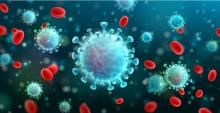
Tatiana Smolkin, Eric S Shinwell: Neonatal SARS-CoV-2 Infections in Breastfeeding Mothers (Pediatrics . )
Assesses infection rates predischarge and postdischarge in breast milk-fed newborns with severe acute respiratory syndrome coronavirus 2 (SARS-CoV-2)-positive mothers who were separated postdelivery from their mothers and discharged from the hospital. Also, aims to evaluate breastfeeding rates predischarge and postdischarge.

Dana Binyamin, Orna Nitzan, Maya Azrad, Zohar Hamo, Omry Koren, Avi Peretz: The microbial diversity following antibiotic treatment of Clostridioides difficile infection (BMC Gastroenterol .)
Clostridioides difficile (C. difficile) is a major nosocomial pathogen that infects the human gut and can cause diarrheal disease. A dominant risk factor is antibiotic treatment that disrupts the normal gut microbiota. The aim of the study was to examine the correlation between antibiotic treatment received prior to C. difficile infection (CDI) onset and patient gut microbiota.

Yarden Greental Ness, Amir A Kuperman: Improved transplant outcomes with myeloablative conditioning for hemophagocytic lymphohistiocytosis in HLA-matched and mismatched donors: a national multicenter retrospective study (Bone Marrow Transplant . )
We report the results of national retrospective study of 45 children with hemophagocytic lymphohistiocytosis (HLH) who underwent allogeneic hematopoietic stem-cell transplantation (HSCT) in Israel between the years 2000-2018. Donors were either HLA-matched (n = 26), partially mismatched (n = 7), haploidentical (n = 8), or cord-blood (n = 4).
Daniel Oren, Amiel A Dror, Tania Bramnik, Eyal Sela, Igal Granot, Samer Srouji: The power of three-dimensional printing technology in functional restoration of rare maxillomandibular deformity due to genetic disorder: a case report (J Med Case Rep .)
Thalassemia is an inherited autosomal recessive blood disorder causing abnormal formation of hemoglobin, known as a syndrome of anemia with microcytic erythrocytes. It is the most common genetic disorder worldwide, with a high prevalence among individuals of Mediterranean descent. The state of homozygosity of the beta-globin mutated gene is known as beta-thalassemia major, and these patients require regular blood transfusions and iron chelation therapy for survival. The rapid loss of red blood cells among affected individuals activates compensatory mechanisms of excessive medullary and extramedullary hematopoiesis, leading to severe skeletal bone deformity.
We present the case of a 39-year-old Bedouin male, diagnosed with beta-thalassemia major at infancy, with diagnosed homozygosity for the intervening sequence 2-1 (guanine > adenine) mutation.

Inshirah Sgayer, Karina Naskovica, Raneen Abu Shaqara, Marwan Odeh, Jacob Bornstein, Maya Frank Wolf: Early planned labor induction vs expectant management in late preterm pre-labor rupture of membranes: maternal and neonatal outcome (Ginekol Pol .)
Compares expectant management with early planned labor induction in pregnancies complicated by late preterm pre-labor rupture of membranes (PPROM).
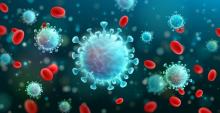
Elon Glassberg: Data Empowerment of Decision Makers in an Era of Pandemic 'Classic' and Artificial Intelligence Intersection In the Service of Medicine (J Med Internet Res .)
The COVID-19 outbreak required prompt actions by health authorities around the world, in response to a novel threat. With enormous amounts of information originating in sources with uncertain degree of validation and accuracy, it is essential to provide executive level decision makers with the most actionable, pertinent and updated data analysis to enable them to adapt their strategy swiftly and competently. We report here the origination of a COVID-19 dedicated response in the Israel Defense Force (IDF) with the assembly of an operational Data Center for the Campaign against Coronavirus (ID3C).
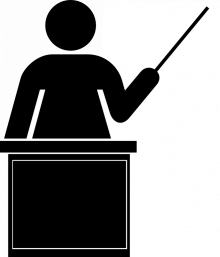
Alon Barash, Nomy Dickman, David Karasik: Educating future doctors in Covid-19 times: Anatomists lead the way! (Anat Sci Educ . )
We have read, with great interest, several articles published in the Anatomical Sciences Education regarding anatomy teaching in the Covid-19 pandemic (Evans et al, 2020; Pather et al., 2020; Smith and Pawlina, 2021) and would like to reflect on the subject. The Covid-19 (SARS-CoV-2) pandemic ravaged the world, claiming lives, shutting down economies, and affected many aspects of everyday life, including academic education (Bar Ilan University, 2021; Ben Gurion University, 2021). Like most countries, Israel was influenced dramatically by this outbreak.
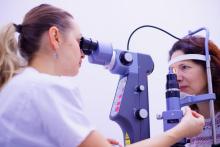
Elon Glassberg, Avi Benov: Combat-related ocular injuries in the IDF during the years 2013-2019 (J Trauma Acute Care Surg .)
Ocular injuries account for up to 13% of battle injuries, despite the implementation of advanced protective eyewear (PE). This study aims to describe the extent of ocular injuries over the last years among Israel Defense Force (IDF) soldiers, and to examine the change in PE policy introduced in 2013 and the effect of a high-intensity conflict on ocular injury characteristics.
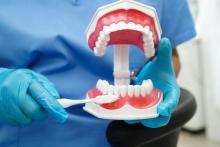
Dalit Porat Ben Amy, Victoria Yaffe, Imad Abu El-Naaj; Oral myopericytoma: a rare pediatric case report and a review of the literature (BMC Oral Health . )
Myopericytoma is a rare mesenchymal neoplasm with perivascular myoid differentiation that arises most commonly in middle adulthood. The lesion generally involves the subcutaneous tissue of distal extremities. Myopericytoma of the oral cavity is extremely rare. Herein we report a case of oral myopericytoma in a pediatric patient, who was treated via a conservative approach with a follow up of 8 years. The case is followed by a literature review. To our knowledge this is the first documented case of oral myopericytoma affecting a patient of such a young age

Amjad Shalabi, Erez Kachel, Liza Grosman-Rimon, Wadi Kinany, Offer Amir, Eylon Ram: Unusual complications following left ventricular assisted device implantation: case series (J Cardiothorac Surg . )
While left ventricular assisted devices (LVAD) have revolutionized the treatment of advanced heart failure, they are associated with a wide range of complications, including bleeding and infection which are the most common complications reported in the literature. Our case series report four unusual complications not related to gastrointestinal bleeding and infections and their management.
NOTE: Erratum published September 6, 2021, here.
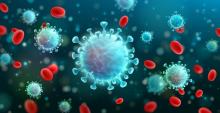
Edo Y Birati: Characteristics and Outcomes of COVID-19 in Patients on Left Ventricular Assist Device Support (Circ Heart Fail .)
The coronavirus disease 2019 (COVID-19) pandemic continues to afflict millions of people worldwide. Patients with end-stage heart failure and left ventricular assist devices (LVADs) may be at risk for severe COVID-19 given a high prevalence of complex comorbidities and functional impaired immunity. The objective of this study is to describe the clinical characteristics and outcomes of COVID-19 in patients with end-stage heart failure and durable LVADs.

Baruh Polis, David Karasik, Abraham O Samson: Alzheimer's disease as a chronic maladaptive polyamine stress response (Aging (Albany NY) .)
Polyamines are nitrogen-rich polycationic ubiquitous bioactive molecules with diverse evolutionary-conserved functions. Their activity interferes with numerous genes' expression resulting in cell proliferation and signaling modulation. The intracellular levels of polyamines are precisely controlled by an evolutionary-conserved machinery. Their transient synthesis is induced by heat stress, radiation, and other traumatic stimuli in a process termed the polyamine stress response (PSR). Notably, polyamine levels decline gradually with age; and external supplementation improves lifespan in model organisms. This corresponds to cytoprotective and reactive oxygen species scavenging properties of polyamines. Paradoxically, age-associated neurodegenerative disorders are characterized by upsurge in polyamines levels, indicating polyamine pleiotropic, adaptive, and pathogenic roles. Specifically, arginase overactivation and arginine brain deprivation have been shown to play an important role in Alzheimer's disease (AD) pathogenesis. Here, we assert that a universal short-term PSR associated with acute stimuli is beneficial for survival.
Efficacy of Birth Dose Vaccination in Preventing Mother-to-Child Transmission of Hepatitis B: A Randomized Controlled Trial Comparing Engerix-B and Sci-B-Vac (Vaccines (Basel) . )
Peripartum transmission of hepatitis B virus (HBV) from an infected mother to the child can be prevented in most but not all cases by immediate vaccination of the newborn. The aim of this study was to compare the efficacy of two licensed hepatitis B vaccines, Engerix-B versus Sci-B-Vac, in preventing peripartum HBV transmission. (Rifaat Safadi, Tawfik Khoury, Nizar Saed, Marwan Hakim, Jeryes Jamalia, Yousef Nijim, Nicola Farah, Tawfik Nuser, Mahmud Mahamid)
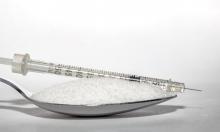
Raunak Saab, Rasmi Abu-Ras, Hussein Darawshi: Maturity Onset Diabetes of the Young Type 2 (MODY2): Insight from an Extended Family (Diabetes Res Clin Pract .)
Assesses long-term outcome of patients with maturity onset diabetes of the young, type 2 (MODY2) in a unique large cohort of patients with the same genetic and environmental background.

Johnny S Younis, Shiran Yakovi, Yuri Perlitz: Proof of concept use of progesterone/estradiol ratio to investigate late follicular progesterone in women with low number of pre-ovulatory follicles (Minerva Endocrinol (Torino) . )
Investigates late follicular progesterone (P) serum level in women with low number of pre-ovulatory follicles in the assisted reproductive technologies (ART) setting.




